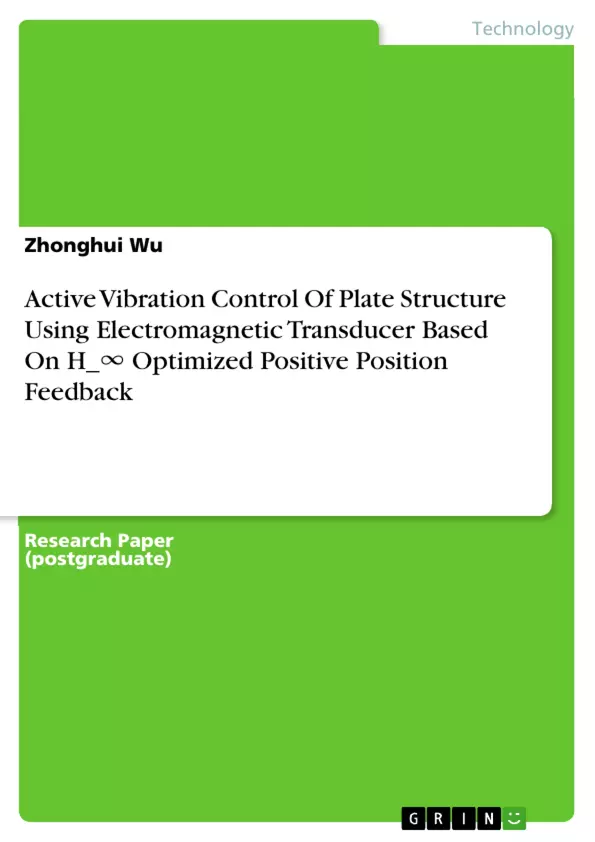In this paper active vibration control (AVC) methodology is presented by the author using self-sensing magnetic transducers for a flexible plate structure. H_∞ Optimized positive position feedback (HOPPF) controller is tested and verified for multi-modes multi-input-multi-output (MIMO) vibration suppression through simulation and experiment implement. Genetic algorithm (GA) searching is applied to obtain the optimal parameters of the controllers according to the minimization criterion solution to the H_∞ norm of the whole closed-loop system.
Table of Contents
- Abstract
- 1. Introduction
- 2. Flexible Plate Structure Modeling
- 2.1 Experimental Model
- 2.2 Analytical Model
- 2.3 Modal Analysis
- 2.4 Numerical Model
- 2.5 Simulation Model of The Plate
- 3. Multi-modes MIMO HOPPF
- 3.1 PPF Controller
- 3.2. Multi-modes MIMO HOPPF Controller Parameter Selection
- 4. Simulation
- 5. Experiment
- 6. Summary
- Acknowledgement
- Conflict of interest statement
- References
Objectives and Key Themes
This paper investigates the application of active vibration control (AVC) using self-sensing magnetic transducers to mitigate vibrations in a flexible plate structure. The study focuses on implementing and validating a H∞ Optimized Positive Position Feedback (HOPPF) controller for multi-mode, multi-input-multi-output (MIMO) vibration suppression using both simulation and experimental methods. Genetic Algorithm (GA) optimization is employed to determine optimal controller parameters based on minimizing the H∞ norm of the closed-loop system.
- Active Vibration Control (AVC) of flexible plate structures
- Self-sensing magnetic transducers
- H∞ Optimized Positive Position Feedback (HOPPF) controller
- Multi-mode, Multi-Input-Multi-Output (MIMO) vibration suppression
- Genetic Algorithm (GA) optimization for controller parameter selection
Chapter Summaries
The paper begins by introducing the challenges of unwanted vibration in lightweight structures and outlines the need for vibration control methods. It then presents an overview of existing vibration control techniques, including modal control, independent modal space control (IMSC), resonant control, and Positive Position Feedback (PPF). The paper highlights the advantages of PPF and its application in various studies.
Chapter 2 focuses on modeling the flexible plate structure. It describes the experimental setup, which includes a thin plate mounted with electromagnetic transducers. The chapter also presents the analytical model of the thin plate and explores the derivation of the partial differential equation (PDE) that governs its transverse vibration. The chapter concludes with a discussion of modal analysis and its application to solve the PDE.
Chapter 3 introduces the multi-mode MIMO HOPPF controller and details the PPF controller design. It also explains the process of selecting optimal controller parameters using the Genetic Algorithm (GA) based on H∞ optimization criteria.
Keywords
The main keywords and focus topics of this research include H∞ Optimized Positive Position Feedback, Multi-Input-Multi-Output, Genetic Algorithm, and Active Vibration Control. These terms represent the core concepts and methodologies employed in the study of vibration suppression in flexible plate structures using self-sensing magnetic transducers.
- Citar trabajo
- Zhonghui Wu (Autor), 2015, Active Vibration Control Of Plate Structure Using Electromagnetic Transducer Based On H_∞ Optimized Positive Position Feedback, Múnich, GRIN Verlag, https://www.grin.com/document/323077



